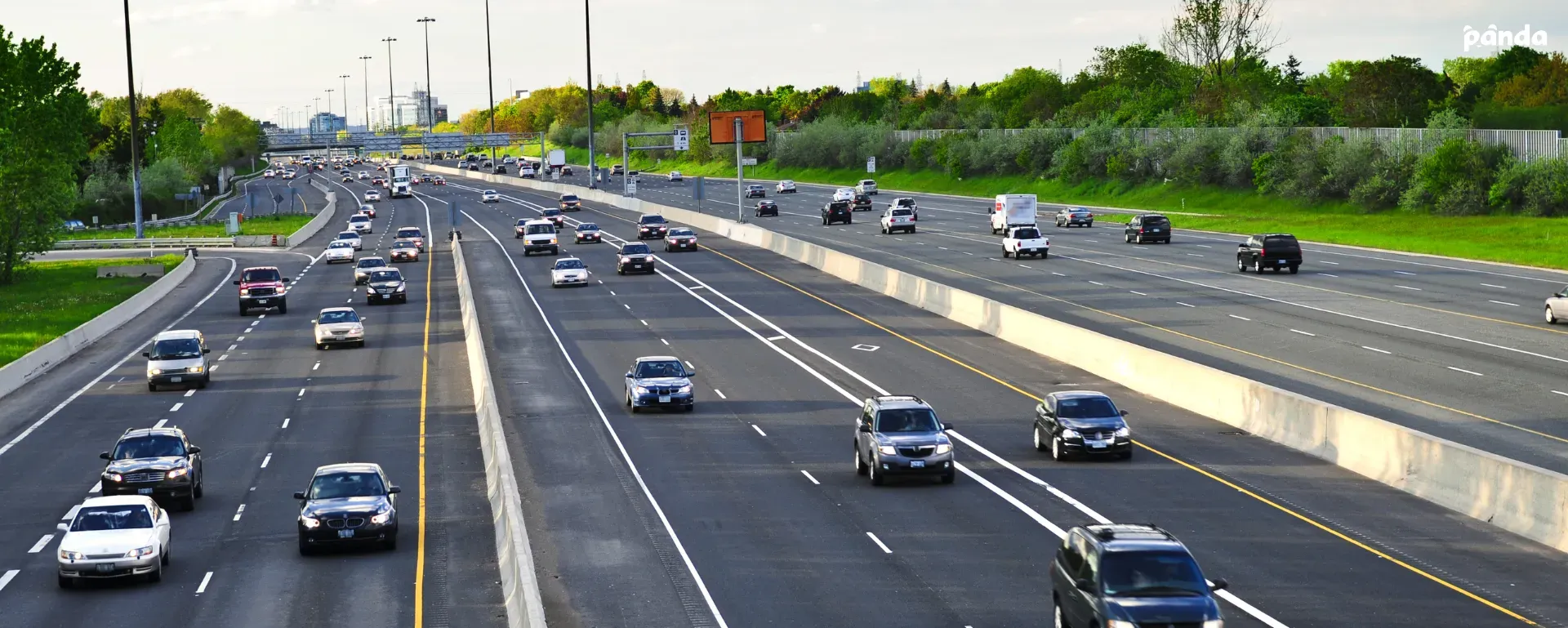Road lane requirements vary based on road type: local, arterial, highway, or freeway.
Local and residential roads typically have 2 lanes with slower speed limits.
Arterial roads range from 4–6 lanes and serve higher traffic volumes.
Highways and motorways can have 6–14 lanes, especially in urban areas.
Additional lanes for turning, buses, or emergencies are common in complex networks.
How to Decide the Number of Lanes on a Road
A Quick Recap of This Story
Introduction
The number of lanes on a road is determined by various factors, including the road's function, traffic volume, speed limit, surrounding land use, and geographic setting. Transportation authorities around the world establish road classification systems that guide how many lanes a road should have to ensure safe and efficient movement of vehicles.
Local and Residential Roads
Local or residential roads serve neighborhoods and provide direct access to homes, schools, and small businesses. These roads are designed for low traffic volumes and slower speeds.
-Typical Lane Count: Usually two lanes—one in each direction.
-Lane Width: Ranges from 2.7 to 3.3 meters (9–11 feet).
-Speed Limit: Generally between 30 and 50 km/h (20–30 mph).
These roads often incorporate sidewalks, speed bumps, and on-street parking but typically do not require additional travel lanes.
Collector and Arterial Roads
Collector roads channel traffic from local roads to larger arterial roads. Arterial roads serve as major routes within urban and suburban areas, facilitating higher traffic volumes and longer travel distances.
-Typical Lane Count for Collector Roads: 2 to 4 lanes.
-Typical Lane Count for Arterial Roads: 4 to 6 lanes, often divided by a median.
-Lane Width: Between 3.0 and 3.6 meters (10–12 feet).
-Speed Limit: Usually ranges from 50 to 80 km/h (30–50 mph).
Arterial roads may also include dedicated turning lanes, traffic signals, and pedestrian crossings to manage flow and improve safety.
Highways and Expressways
Highways and expressways are designed for uninterrupted traffic flow over long distances, often between cities or regions. These roads are access-controlled and do not have at-grade intersections.

-Typical Lane Count: 4 to 8 lanes in total, with 2 to 4 lanes in each direction.
-Lane Width: Typically 3.6 meters (12 feet).
-Speed Limit: Commonly ranges from 80 to 120 km/h (50–75 mph).
These roads usually feature central medians, guardrails, emergency lanes, and sometimes service roads to support heavy vehicle traffic.
Freeways and National Motorways
Freeways and national motorways represent the highest classification of roads in many countries. They handle the highest volumes of traffic and offer the highest travel speeds.
-Typical Lane Count: Between 6 and 14 lanes in urban settings, with 3 to 7 lanes in each direction.
-Additional Lanes: Often include high-occupancy vehicle (HOV) lanes, toll lanes, or dedicated bus corridors.
-Lane Width: Standard 3.6 meters (12 feet) per lane.
-Speed Limit: Between 100 and 130 km/h (60–80 mph), depending on country-specific regulations.
Freeways are designed with flyovers, underpasses, interchanges, and sound barriers to facilitate high-speed, long-distance travel with minimal interruptions.
Rural and Agricultural Roads
Rural roads are primarily used in farming, forestry, and sparsely populated regions. These roads are typically narrow, with limited shoulder space and fewer traffic controls.

-Typical Lane Count: 2 lanes, one in each direction.
-Lane Width: Often narrower than urban roads—ranging from 2.5 to 3.3 meters per lane.
-Speed Limit: Varies widely but often between 60 and 100 km/h (37–62 mph).
In hilly or high-traffic areas, rural roads may include occasional passing lanes or climbing lanes to support heavy vehicles.
Special-Purpose Road Lanes
Beyond standard travel lanes, many roads include additional lanes for specific purposes:
Turning Lanes
At intersections or junctions, dedicated turning lanes improve traffic flow and reduce collision risk.
Bus and Transit Lanes
Reserved lanes for public buses and rapid transit vehicles are common in high-density cities to promote efficient public transport.
Bicycle and Pedestrian Lanes
Cycle tracks and pedestrian walkways, while not counted as vehicle lanes, are essential components of urban road design for safety and mobility.
Emergency and Breakdown Lanes
Often found on highways, these shoulders allow vehicles to pull over safely in case of a breakdown or emergency.
Conclusion
The required number of lanes on a roadway depends heavily on its classification, expected usage, and local design standards. While residential roads may require only two lanes, major expressways may have more than ten. Proper lane allocation not only ensures efficient traffic flow but also contributes to road safety and long-term infrastructure sustainability.

0 comments
Be the first one to comment, but before that...
Here are some best practices for writing comments: